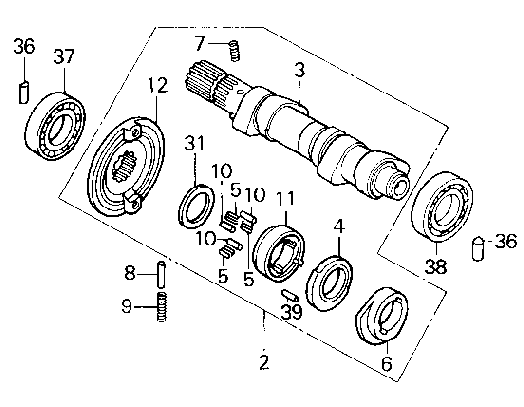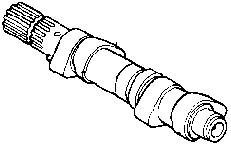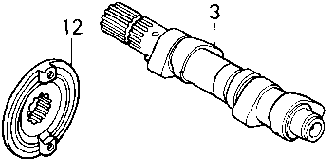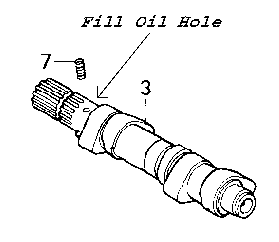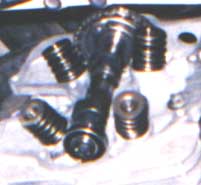| STEP FOUR:
Now that you have a completely bare cam it is time to weld or fill
the now exposed auto decomp oil feed. This hole is easily identified
as it's the only one that goes right through into the centre of the camshaft
in the area shown (diagram on right).
WHY?
The more oil going to the rockers the better the life of the cam
& rockers , if you don't block it off some of the oil will take the path
off least resistance, which will be straight back down the cam chain opening
to the sump much better to lube the rockers first then to the sump.
HOW?
Method 1 - When I removed the auto decomp. on my '88 XR600 I had
a precision fit plug made. Which was pressed in also with a loctite
product that presently eludes me.
Method 2 - Have the hole professionally welded by the best welder
available!! (TIG would probably be best), this should only be done by a very
experienced welder as any heat or erosive spark damage and your cam could
end up being scrap. It is very important that none of the critical
surfaces be a current path!
Method
3 - I have also heard of a sleeve being made up to cover
it. This is my current preferred method, I recently had a
sleeve mad for a genuine HRC cam that I have removed the auto-decomp
setup from. It would require a sleeve to be turned up with a
tight fit. This would
probably be the most failsafe method, You need to remove, or grind away
the small lug that is located in the
same area as the oil hole as depicted. You can also slot the
sleeve
(refer to Thorstens pic below) so as to not have to irreversibly modify
the
camshaft.
|
